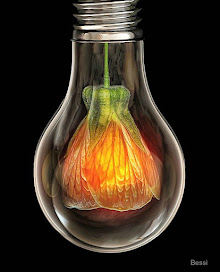
Osmanthus, an intensely rich and beautiful raw material, straddles the line between strange and familiar with its fruity, animalic character. How does one find solace in the apparent contradiction, let alone a daring heart? Perfume aficionados and professionals have always known that acceptance of a novel odor requires more than an open mind; it requires a willingness to risk aversion in order to experience pleasure.
Osmanthus fragrans is one of ten flowers held in high esteem by the Chinese, (wintersweet, peony, and chrysanthemum, orchid, rose, azalea, camellia, lotus and narcissus complete the list). Used to flavor semi-fermented green teas, Osmanthus’ apricot intensity sits above the verdancy of tender tea leaves and possesses the grace of a calligraphic flourish. Dried osmanthus flowers have a lush, jammy intensity that is slightly astringent, albeit less so than the fragrance absolute, which brazenly dallies with leatheric facets. Ironically, Steffen Arctander, esteemed author of Perfume and Flavor Materials of Natural Origin, had no experience using Osmanthus in perfumery when his book was published in 1961. This may have been due to the fact that trade with China in the 1960’s was not as prevalent as it is now.
In the United States, Osmanthus grows in the southeastern states, where it is often referred to as tea olive or sweet olive. Hové, a boutique perfumery in New Orleans, has been selling its Tea Olive fragrance for decades. I was introduced to the fragrance by a local antique store owner named Joan Good, a New Orleans icon who is famous for her garnet and cameo offerings. Once inside the perfumery, she led me to a slender bottle with an amber-hued liquid inside. The white spray nozzle was slightly sticky with a thick, brown resin, something you would see on a vintage bottle of perfume sitting on a vanity tray (I later learned that this is due to the high percentage of raw material that is used in creating the fragrance).
In a captivating drawl, the former poker mate of playwright Tennessee Williams said, “Tea Olive is quite beautiful to those of us that grew up in the south and the ladies here are quite fond of it, but its charm can be an acquired taste for some.” It didn’t take long for me to get past the “acquired” phase when I smelled Tea Olive. My childhood memories are colored by days spent at my father’s leather shop (which now houses offices at the Fashion Institute of Technology) and the taste of apricot fruit leather my mother and I procured weekly at Krum’s, in the Bronx (a candy landmark on the historic Grand Concourse).
The rich, fruity quality of Hové’s Tea Olive grows mouthwateringly ripe alongside an animalic aspect which merges with the wearer’s skin. The effect is more linear than what is found in traditionally constructed fragrances, but maintains the allure of a full bouquet. If you are one who delights in the melding of the olfactive and the gustatory, you can indulge in fragrance and flower. Culinary osmanthus is more easily procured due to increased trade with China and TeaSpring.com ships superior osmanthus at an affordable price. The tisane arrives at your door directly from China, complete with smiling Mao postage stamps on the parcel. You can add it to your favorite green tea (Taiwan oolong is best), infuse heavy cream for the making of truffles, or add it to vodka and macerate for up to four weeks to make an extract. The only limit is your imagination.
Osmanthus fragrans is one of ten flowers held in high esteem by the Chinese, (wintersweet, peony, and chrysanthemum, orchid, rose, azalea, camellia, lotus and narcissus complete the list). Used to flavor semi-fermented green teas, Osmanthus’ apricot intensity sits above the verdancy of tender tea leaves and possesses the grace of a calligraphic flourish. Dried osmanthus flowers have a lush, jammy intensity that is slightly astringent, albeit less so than the fragrance absolute, which brazenly dallies with leatheric facets. Ironically, Steffen Arctander, esteemed author of Perfume and Flavor Materials of Natural Origin, had no experience using Osmanthus in perfumery when his book was published in 1961. This may have been due to the fact that trade with China in the 1960’s was not as prevalent as it is now.
In the United States, Osmanthus grows in the southeastern states, where it is often referred to as tea olive or sweet olive. Hové, a boutique perfumery in New Orleans, has been selling its Tea Olive fragrance for decades. I was introduced to the fragrance by a local antique store owner named Joan Good, a New Orleans icon who is famous for her garnet and cameo offerings. Once inside the perfumery, she led me to a slender bottle with an amber-hued liquid inside. The white spray nozzle was slightly sticky with a thick, brown resin, something you would see on a vintage bottle of perfume sitting on a vanity tray (I later learned that this is due to the high percentage of raw material that is used in creating the fragrance).
In a captivating drawl, the former poker mate of playwright Tennessee Williams said, “Tea Olive is quite beautiful to those of us that grew up in the south and the ladies here are quite fond of it, but its charm can be an acquired taste for some.” It didn’t take long for me to get past the “acquired” phase when I smelled Tea Olive. My childhood memories are colored by days spent at my father’s leather shop (which now houses offices at the Fashion Institute of Technology) and the taste of apricot fruit leather my mother and I procured weekly at Krum’s, in the Bronx (a candy landmark on the historic Grand Concourse).
The rich, fruity quality of Hové’s Tea Olive grows mouthwateringly ripe alongside an animalic aspect which merges with the wearer’s skin. The effect is more linear than what is found in traditionally constructed fragrances, but maintains the allure of a full bouquet. If you are one who delights in the melding of the olfactive and the gustatory, you can indulge in fragrance and flower. Culinary osmanthus is more easily procured due to increased trade with China and TeaSpring.com ships superior osmanthus at an affordable price. The tisane arrives at your door directly from China, complete with smiling Mao postage stamps on the parcel. You can add it to your favorite green tea (Taiwan oolong is best), infuse heavy cream for the making of truffles, or add it to vodka and macerate for up to four weeks to make an extract. The only limit is your imagination.
Notes:
Dried osmanthus flowers are available at Tea Spring.
Recipe for Glass Petal Smoke's Osmanthus Tea Cake can be found here.
Recipe for Glass Petal Smoke's Osmanthus Tea Cake can be found here.
Tea Olive perfume can be purchased at Hové.
Cameos and garnet jewelry are a specialty at Joan Good Antiques. (Joan Good passed away on April 6, 2017, the website for her store is no longer active.)
Arctander, Steffan. Perfume and Flavor Materials of Natural Origin. Carol Stream, Illinois. Allured Publishing, 1961.





